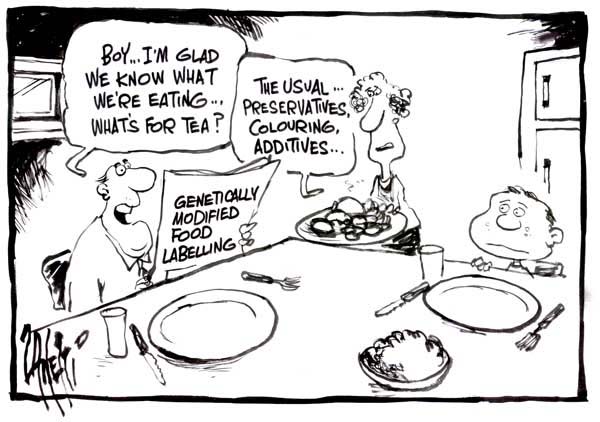This webpage was produced as
an assignment for an undergraduate course at
Debate and Policies on Labeling GM Foods
Introduction
Permission Pending. Click on the cartoon to be directed to the original site.
The use of genetically modified foods is growing worldwide. For example, in
Some statistics on GM foods:
·
In the
· At least 60% of products in US supermarkets contain GMOs (Ahmed, 2002)
·
Yet only 14% of Americans correctly believed
more than half of food products in
· Only 19% of Americans had thought they had eaten a GM product (Program on International Policy Attitudes, 2003).
· 45% of Americans think GM foods are safe for consumption (The Genetic Engineering Action Network, 2003).
· When asked if GM products would improve quality of life, only 39% of Americans agreed (The Genetic Engineering Action Network, 2003).
· 35% thought it would make diminish their quality of life (The Genetic Engineering Action Network, 2003).
· An overwhelming majority of Americans (94%) think GM foods should be labeled, but only about half (54%) said it would negatively affect their purchasing decision (The Genetic Engineering Action Network, 2003).
This website addresses the issues surrounding this
debate. First, what are the policies on
labeling GM foods in the
| Introduction | Policies | Policies cont. | Detection | Pros and Cons | Works Cited |
|---|
This page was created by Nicole Hesson.
If you have questions, comments, or concerns, email the editor.
